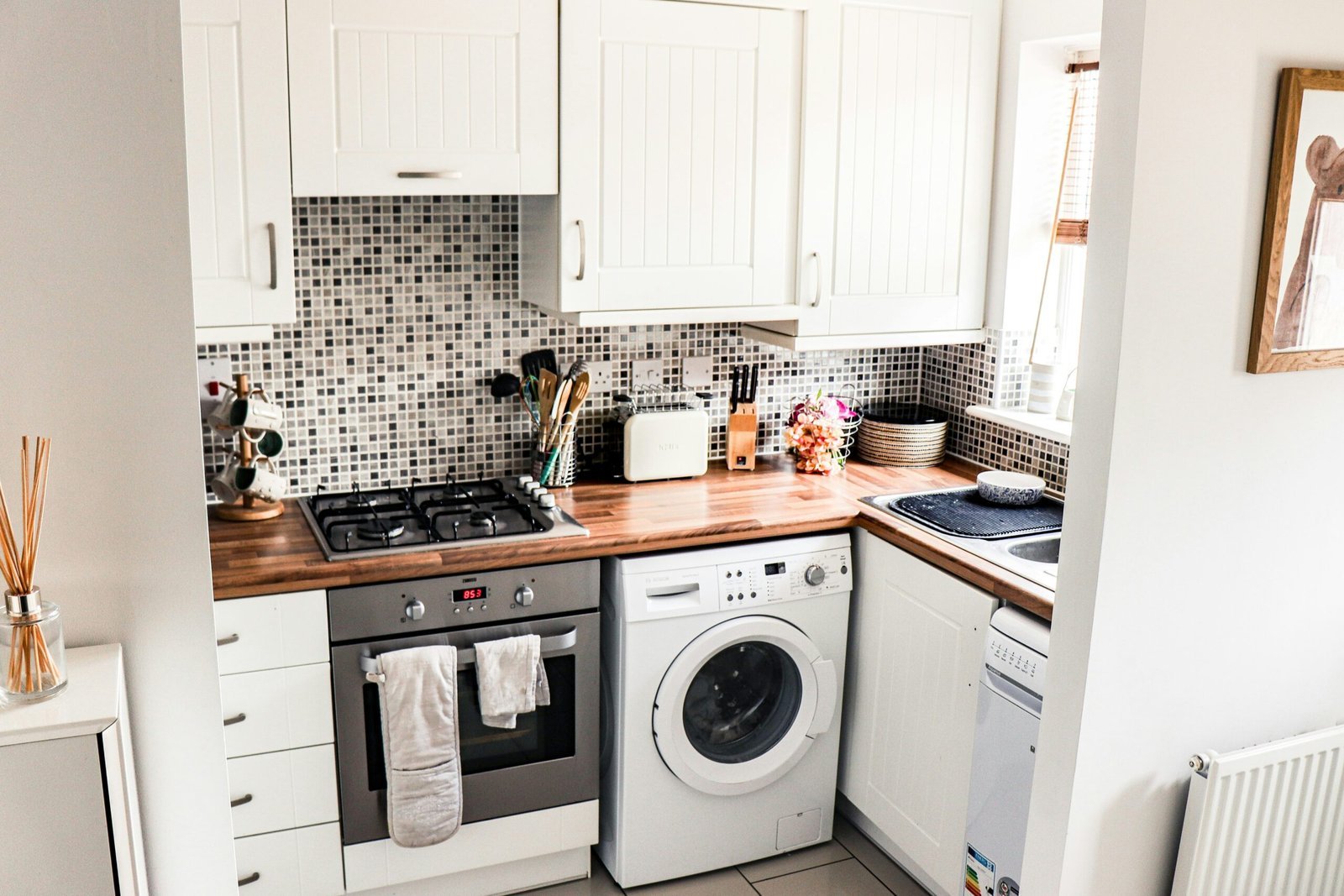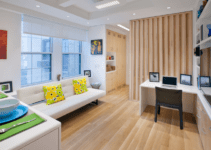Explore the growing trend of small space living, focusing on innovative design, sustainability, and affordability. Discover tips for maximizing functionality and aesthetics in homes under 1,500 square feet, including creative layout ideas, furniture selection, and effective storage solutions. Embrace a lifestyle of minimalism and intentionality while transforming your small home into a stylish and efficient haven. From color choices to bringing the outdoors in, this guide offers inspiration and practical advice for those looking to thrive in smaller spaces.
Introduction to Small Spaces
In recent years, the concept of living in smaller spaces has gained significant traction among homeowners and potential buyers alike. This growing popularity can be attributed to a variety of factors, including sustainability, affordability, and a desire for simplified living. Small homes, often defined as those under 1,500 square feet, present a unique opportunity for innovative design, allowing residents to embrace a lifestyle that prioritizes both functionality and aesthetics.

One of the primary advantages of smaller living spaces is their environmental sustainability. By reducing the square footage, homeowners can minimize their carbon footprint through lower energy consumption, decreased resource usage in construction, and reduced waste. Smaller homes often require fewer materials, making them a more eco-friendly option compared to traditional larger homes. This conscious approach to living aligns with the growing trend of prioritizing sustainability in contemporary society.
Please read our article watch the newly uploaded video from our YouTube channel:
“Grig Stamate – Interior Design Solutions”
https://www.youtube.com/@GrigStamate
Small but Mighty: Dream Houses under 1,500 sq ft (140 sq m) #5 (video)
Here, you can see other related videos from our channel:
Small but Mighty: Dream Houses under 1,500 sq ft (140 sq m) #3 (video)
Small but Mighty: Dream Houses under 1,500 sq ft (140 sq m) #4 (video)
Affordability is another crucial factor driving the popularity of small homes. The financial burden of large homes can be overwhelming, especially for first-time buyers or those looking to downsize. Smaller homes typically come with lower mortgage payments, reduced property taxes, and less expensive maintenance costs. This financial flexibility allows homeowners to allocate resources towards experiences or investments that enhance their overall quality of life rather than merely sustaining a large space.
Furthermore, living in a smaller home encourages a lifestyle centered around minimalism and intentionality. The constraints of space challenge individuals to prioritize what is truly essential, ultimately leading to a more organized and serene environment. These compact living conditions foster creativity and innovation in design, pushing architects and home designers to find imaginative solutions that maximize functionality without sacrificing style.
As we delve deeper into this blog post, we will explore numerous design ideas that demonstrate how small living spaces can be transformed into efficient and beautiful homes. The focus will be on embracing the charm and versatility of these smaller structures while ensuring they meet the diverse needs of their inhabitants.
Understanding Small Home Design
As urban populations grow and housing affordability becomes a pressing issue, small home design has gained considerable attention. Designing compact living spaces requires a keen understanding of spatial efficiency, which prioritizes maximizing every square foot available. By employing strategic planning and innovative layout designs, homeowners can create functionality and comfort within smaller footprints.
One significant principle in small home design is the use of multifunctional furniture. This allows homeowners to make the most out of limited space by selecting pieces that serve multiple purposes. For example, a sofa that converts into a bed can accommodate overnight guests while avoiding the clutter of extra furniture. Additionally, extending dining tables, ottomans with storage capabilities, and foldable desks are all excellent options that can transform spaces according to the user’s needs.
Another essential aspect of small home design involves clever storage solutions. In compact interiors, traditional storage options may not suffice, necessitating creative approaches. Using vertical space for storage, such as installing shelves that reach the ceiling, can help keep floors clear while optimizing room functionality. Under-bed storage and built-in cabinetry also maximize utility without overwhelming the visual aesthetic of the space.
Furthermore, light and color choices play a critical role in establishing the ambience and perceived size of a small home. Lighter hues tend to reflect more light, creating an airy environment that gives the illusion of a larger area. Large windows or strategically placed mirrors can enhance natural light flow and create depth. Implementing these principles leads to an inviting, spacious feel, even in limited square footage, allowing residents to enjoy their small dream homes fully.
Themes for Small Home Interiors
Designing a small home interior involves selecting a theme that not only complements the limited space but also amplifies its potential for comfort and style. One of the most popular themes for small spaces is the minimalist approach. This design philosophy emphasizes simplicity, functionality, and a clutter-free environment. By embracing neutral colors, clean lines, and minimal furnishings, homeowners can create an airy atmosphere that feels more spacious than it actually is.
Modern design, characterized by sleek and sophisticated aesthetics, is another excellent choice for small homes. This theme often incorporates bold, geometric shapes and a monochromatic color palette, which can make even the tiniest areas feel contemporary and open. The integration of technology, such as smart home features, further complements this modern theme, enhancing both convenience and comfort.
For those who appreciate warmth and a sense of nostalgia, a rustic theme may be ideal. This design invokes a cozy, lived-in feel, often featuring wooden beams, natural materials, and earthy colors. Small spaces can be transformed into charming retreats by focusing on rustic elements like vintage furniture and handmade decor items, providing a perfect balance of tradition and warmth.
If you lean towards a more eclectic style, a bohemian theme could be a captivating option. This design embraces vibrant colors, varied patterns, and a mixture of textures, allowing for personal expression. Plants and artisanal crafts often feature prominently in bohemian interiors, creating an inviting, relaxed atmosphere that is perfect for smaller spaces.
Lastly, the industrial theme embraces raw materials, such as exposed brick, metal fixtures, and reclaimed wood. This style embraces the beauty of imperfection, creating a unique backdrop that can make a small home feel both stylish and authentic. Each of these themes offers a distinct aesthetic, demonstrating that one can achieve remarkable results in compact living spaces.
Innovative Layout Ideas
When designing a home under 1,500 square feet, every square inch must be utilized effectively to achieve a balance of style and functionality. Innovative layout ideas are essential for maximizing utility without compromising on design. One such concept is the open floor plan, which eliminates unnecessary walls to create a seamless flow between living areas. This arrangement not only enhances the sense of space but also encourages social interaction, making it ideal for smaller homes.
Another effective strategy is the incorporation of multi-functional furniture. For instance, a sofa bed can serve as both a comfortable seating area during the day and a guest sleeping space at night. In addition, nesting tables can be discreetly stored away when not in use but can easily expand when entertaining guests. This adaptability is vital for optimizing limited square footage.
In terms of layout, consider arranging the kitchen adjacent to the living area to promote a communal atmosphere. An island can serve as a barrier that separates the two spaces while providing additional countertop and seating area. Moreover, utilizing vertical space through tall cabinets or shelves can free up floor area, creating a more open and airy feel throughout the home.
For bedroom layouts, built-in storage solutions can be integrated to maintain a clean, uncluttered look. Murphy beds are another clever option that allows the bedroom to double as an office or studio when not in use. Similarly, placing windows strategically can enhance natural light while providing stunning views, making small rooms feel larger and more inviting.
Innovative layout ideas are not just about spatial efficiency; they also revolve around thoughtful design that reflects the homeowner’s individuality. Whether through bold color choices or artistic decor, each layout can harmonize aesthetics with practicality, ultimately leading to a dream home that feels expansive despite its modest size.
Creative Use of Color and Patterns
The psychological effects of color in design are profound, especially in small living spaces under 1,500 square feet. Colors can influence emotions and perceptions, making them pivotal in creating a desirable ambiance. For instance, lighter shades such as soft whites, pale blues, and pastel greens tend to open up small spaces, making them feel larger and more airy. These colors reflect light effectively, assisting in enhancing the natural lighting that is often scarce in smaller homes. Conversely, darker hues, when used strategically, can introduce warmth and coziness. They can also add depth by creating an intimate atmosphere, which is particularly valuable in multifunctional spaces.
When considering a color palette, it’s important to embrace a unified theme that flows throughout the different areas of the home. This cohesion contributes to a feeling of spaciousness, which is essential in smaller dwellings. Neutral tones can serve as a great base, allowing for variety in accessories and decor items. Adding splashes of bolder colors through furniture pieces, artwork, or accent walls can create focal points that draw the eye, thus manipulating the perception of space.
In terms of patterns, utilizing them wisely enhances the character of a small home without overwhelming it. Opting for scaled-down patterns—like smaller geometrics or subtle florals—ensures that they do not dominate the room. These patterns can be incorporated into textiles such as curtains, cushions, or area rugs, which can add a personal touch while establishing a sense of harmony. Additionally, using accent pieces with different patterns can add visual interest, yet maintaining a similar color scheme will keep the overall look coherent.
Ultimately, the thoughtful application of color and patterns will not only brighten small spaces but will also significantly affect the overall perception of a home, ensuring that even the most compact designs feel inviting and stylish.
Furniture Selection and Arrangement
In smaller homes, the selection and arrangement of furniture play a significant role in optimizing space and enhancing the living experience. Choosing the right pieces can transform compact areas into functional yet comfortable living spaces. When selecting furniture, dual-purpose items are highly recommended. For instance, a sofa bed serves both as a seating option during the day and a sleeping area at night, effectively maximizing utility without taking up unnecessary space.
Modular furniture is another excellent choice for small homes. Modular units allow for flexibility; they can be rearranged or expanded according to the needs of the moment or the occasion. A modular shelving system provides storage for books or decorative items while also acting as a room divider, facilitating an open-concept feel. This adaptability is crucial when dealing with limited square footage, as it enables homeowners to create a personalized atmosphere that complements their lifestyle.
Furniture arrangement is equally important in small spaces. The placement of each item can significantly affect the flow of movement and the overall ambiance. It is essential to ensure pathways are clear and that the arrangement fosters a sense of openness. Consider grouping furniture to create conversational areas that encourage interaction without feeling cramped. Additionally, utilizing vertical space by incorporating tall shelves or wall-mounted storage can free up floor space, which is essential for maintaining a sense of spaciousness.
Moreover, thoughtful furniture placement can make a small room feel larger. Employing techniques such as angling furniture, using mirrors to reflect light, and selecting appropriately scaled pieces can all contribute to a more expansive feeling within the home. By carefully selecting and arranging furniture, homeowners can achieve an inviting and efficient living space that is both functional and comfortably stylish.
Storage Solutions for Small Homes
In the design of small homes, efficient storage solutions play a crucial role in maximizing available space while maintaining an aesthetically pleasing environment. As homeowners strive to optimize their living areas, innovative storage concepts are essential to conceal clutter and enhance organization. Built-in shelving is one of the most effective ways to utilize vertical space, creating a seamless integration of storage and decor. Implementing shelves that extend from floor to ceiling not only provides ample space for books, decorative items, and personal belongings, but also draws the eye upward, giving the illusion of a more expansive area.
Another smart storage solution is under-bed storage, a versatile option that transforms an often-overlooked area into valuable space. Whether employing storage bins, drawers, or even custom platforms, this approach keeps items like seasonal clothing or extra linens conveniently tucked away yet easily accessible. Additionally, furniture that doubles as storage—such as ottomans or coffee tables with hidden compartments—offers practical solutions that maintain the elegance of the room. Choosing multifunctional furniture allows homeowners to maximize utility without compromising on style.
Moreover, creative use of hidden compartments can elevate storage strategies and prove particularly beneficial in small homes. This might include cleverly designed furniture that conceals storage spaces, like beds with built-in drawers or benches that open for extra room. Such solutions not only maintain a clean visual appearance but also contribute to a smarter organization throughout the home. By focusing on these storage solutions, small homes can become well-organized, functional environments, illustrating that even limited space can be transformed into an inviting and efficient haven. In conclusion, merging innovative design with practical storage ideas can significantly enhance living conditions in homes under 1,500 sq ft.
Bringing the Outdoors In
Incorporating elements of nature into small home interiors can significantly enhance the overall ambiance and well-being of the space. The connection between nature and human health is well-documented, demonstrating that natural elements can reduce stress, improve mood, and promote a sense of clarity. For homes measuring under 1,500 sq ft, bringing the outdoors in becomes an essential design strategy. One effective approach is the strategic use of plants. Indoor plants not only purify the air but also add vibrant colors and textures that can make a small space feel larger and more inviting. Consider integrating a variety of houseplants, from towering fiddle leaf figs to smaller succulents, ensuring that you choose varieties that thrive in the specific light conditions of your home.
Another vital component in merging the indoors with the outdoors is maximizing natural light. Large windows, skylights, and glass doors can create an illusion of expanded space and facilitate a seamless transition from the interior to the exterior. By incorporating large viewing panes, homeowners can beautifully frame outdoor landscapes, making nature a part of everyday living. Furthermore, the use of light, airy colors in furnishings and decor can reflect natural light and enhance the feeling of openness, making the home feel more spacious.
Lastly, the strategic placement of outdoor views is crucial in small home design. Positioning furniture to face stunning vistas or creating window seats can foster appreciation for the surrounding environment. This not only invites a sense of calm but also encourages residents to take a moment to connect with nature. In conclusion, designing small homes by bringing the outdoors in creates a harmonious living environment that enhances overall quality of life while establishing a serene and tranquil atmosphere.
Real-Life Examples and Inspiration
In the world of small house designs, numerous examples exist that reflect the ingenuity and creativity of homeowners. These real-life cases provide a wealth of inspiration for anyone considering a house under 1,500 square feet. One notable example is the “Tiny House Movement,” which celebrates minimalist living while focusing on sustainability and efficient use of space. Homes within this movement often incorporate innovative architectural strategies, such as multifunctional furniture and open floor plans, demonstrating that small spaces can be both stylish and functional.
One striking case is the “Hummingbird House” in Oregon. This sustainable abode boasts just 350 square feet but is designed to maximize its environment. The use of large windows invites natural light, while strategically placed mirrors create an illusion of more space. Additionally, the house is built on a small footprint, minimizing its ecological impact without sacrificing comfort. Each design element tells a story, revealing the careful thought that went into creating a livable space.
Another fascinating example is the “Hobbit House” in Wales. This home is inspired by J.R.R. Tolkien’s literary landscape, embracing earth-sheltered architecture. Its circular design not only enhances its aesthetic appeal but also regulates temperature effectively, thus promoting energy efficiency. Natural materials such as wood and stone imbue the space with a rustic charm, while the incorporation of plants into the design illustrates a harmonious blend of nature and habitat.
These examples, along with countless others, underline the possibilities inherent in compact living spaces. They challenge conventional notions of size and layout, proving that a well-designed small house can be just as appealing, if not more so, than larger homes. Through each unique architectural solution, a narrative is woven, showcasing creativity, resilience, and an unwavering commitment to living gracefully within a smaller footprint.
Other related posts from our website:
Let’s see here, three of them:
https://howtobuildahouseblog.com/small-but-mighty-houses-under-1500-sq-ft-140-sq-m-4/
https://howtobuildahouseblog.com/small-but-mighty-dream-houses-under-1500-sq-ft-140-sq-m-3/
https://howtobuildahouseblog.com/small-but-mighty-dream-houses-under-1500-sq-ft-140-sq-m-2/
We also sincerely hope you like our ideas from this post, and you have also enjoyed our uploaded YouTube video.
See you next time at another article.
Thank you so much for your time. Bye now!


